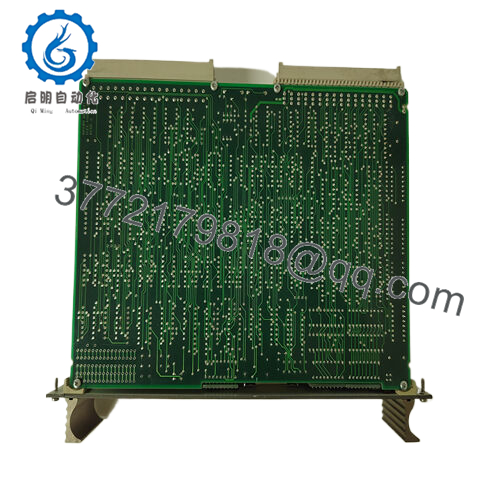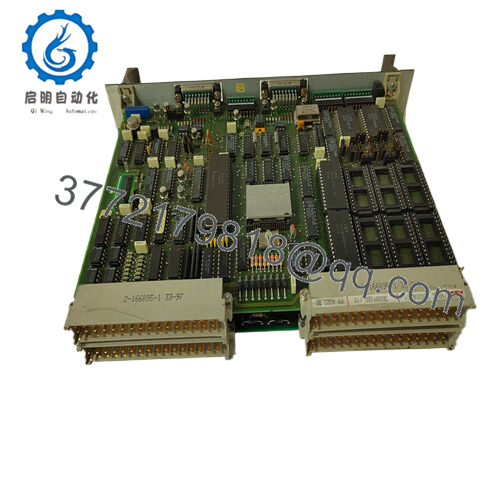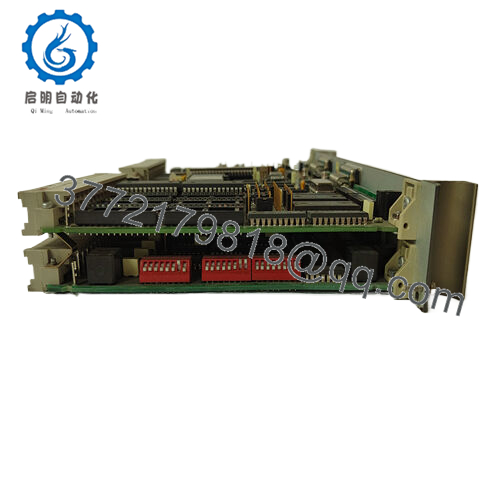Description
In the intricate nexus of industrial automation, where the orchestration of data streams between field devices and supervisory layers must withstand the barrage of protocol variances, network congestion, and failover demands, engineers often grapple with the specter of fragmented communications that splinter oversight and amplify latency in critical loops. Imagine a petrochemical distillation tower, where Modbus queries from remote sensors flood controllers amid fluctuating loads—any bottleneck in message routing could delay valve adjustments, skewing yields or igniting overpressure risks that cascade into shutdowns and regulatory reckonings. Or envision a steel mill’s rolling schedule, embedded in a Symphony Plus DCS, where HART-enabled transmitters relay composition data, but incompatible interfaces spawn polling gaps, eroding the real-time fidelity needed for alloy precision in environments where milliseconds mar margins. These aren’t transient tremors; they’re the foundational fissures in process control ecosystems, where high reliability in I/O signal bridging hinges on interfaces that harmonize legacy silos with modern meshes, ensuring seamless handoffs that sustain the adaptive rhythms your operations orchestrate.
The ABB PMA323BE HIEE300308R1 rises to this as a communication processor module in ABB’s Contronic or Symphony Plus lineages, engineered to mediate robust data exchanges in DCS architectures with unflagging poise. It confronts the engineer’s imperative for unified protocol fluency, arbitrating Modbus RTU/TCP, Profibus DP, and HART overlays across serial and Ethernet spines to funnel field inputs—pressures, flows, or discrete states—into central controllers without the drag of dropped packets or reconfiguration cascades. In hybrid setups like batch reactors or conveyor sequencers, the ABB PMA323BE HIEE300308R1 proves pivotal, its redundant port options and buffer management supporting up to 250 nodes per segment to mitigate congestion in sprawling I/O networks. By embedding diagnostics for line integrity and session health, it trims the troubleshooting toll of disparate drivers, channeling pristine I/O signals that empower process control loops to pivot from prescriptive to predictive, all while aligning with the high reliability your compliance charters and expansion blueprints demand.
What elevates the ABB PMA323BE HIEE300308R1 in industrial automation is its judicious blend of legacy loyalty and forward finesse—it’s the processor that doesn’t dictate but democratizes, with configurable baud rates and parity checks that adapt to mixed-vendor terrains, letting you infuse Ethernet uplifts without eviscerating serial holdouts. For crews consolidating aging Contronic footprints, it dissolves the drag of middleware mazes, hot-swapping into backplanes to sync with 800xA horizons. At heart, it fosters process control that’s not just communicative but cohesive, quelling the discord that disrupts diagnostics and upholding the high reliability your throughput tallies and audit assurances exalt.
The ABB PMA323BE HIEE300308R1 anchors the protocol layer in your DCS stack, slotting into Contronic P or Symphony chassis to ingest serial streams from fieldbus drops—RS485 from valve actuators or RS232 from legacy gauges—then encapsulating them via onboard MCUs into TCP-wrapped payloads for Ethernet uplinks, ensuring cycle-sync across domains with jitter under 10ms. It thrives in ABB’s SD or AC800M ecosystems, where ports fan to TU bases for channel multiplexing, its dual RS232/485 interfaces handling up to 115.2 kbps for high-density polling without collision risks. In a control room rack, it mounts alongside PM processors, its firmware—tuned through Engineering Base—auto-negotiating handshakes for ring topologies that weather cable faults.
Its interplay with peripherals is intuitive: tether to a CI852 Profibus card, and it’s arbitrating address resolutions on the fly, while diagnostic relays pulse alerts to HMIs on buffer overflows or parity slips. Built for edge deployment in remote cabinets, the ABB PMA323BE HIEE300308R1 leverages ABB’s System 800xA tools for parameter scripting—tweak timeouts or checksums once, and it’s propagating configs downstream sans manual marathons. Redundancy manifests in failover mirrors that duplicate traffic, and its protocol stack—spanning DNP3 to OPC DA—eases grafts onto SCADA overlays. For transitional architectures blending Contronic relics with IP cores, it curtails custom scripting, positioning you to refine control narratives over wrangling wire woes.
- PMA323BE HIE300308R1
| Specification | Details |
|---|---|
| Model Number | PMA323BE HIEE300308R1 |
| Brand | ABB |
| Type | Communication Processor Module |
| Input Voltage | 24 V DC |
| Operating Temp Range | -20°C to +60°C |
| Mounting Style | Backplane / DIN Rail |
| Dimensions | 120 x 90 x 45 mm |
| Weight | 0.4 kg |
| Interface/Bus | RS232/485, Ethernet |
| Compliance | CE, RoHS, IEC 61850 |
| Supported Protocols | Modbus RTU/TCP, Profibus DP, HART |
| Typical Power Draw | 4 W |
Embracing the ABB PMA323BE HIEE300308R1 infuses your framework with a reliability ethos forged for the flux of federated feeds, where its noise-immune pathways and session safeguards preserve packet wholeness through EMI storms or voltage veils, begetting performance consistency that stabilizes streams and averts the desyncs that derail decisions. In control cores abuzz with hybrid handshakes, this yields to operators who lean on unified views, unmarred by the artifacting that afflicts ad-hoc arbitrators—directly curbing event-driven eclipses and honing the precision your KPIs exalt.
The assimilation advantages accrue subtly yet substantially, lightening engineering overhead via one-shot firmware flashes that ripple to peripherals, so scaling from 50 to 500 nodes unfolds as a config tweak, not a teardown saga. Engineered for the span of DCS lifecycles, the ABB PMA323BE HIEE300308R1 instills maintenance finesse through heartbeat pings that herald link degradations, elongating probe cadences and rechanneling labor from crisis dives to strategic audits. In the grander scheme, it nurtures an automation tapestry primed for augmentation, where appending IIoT sensors amplifies insight sans eroding foundational sync, vouchsafing long-term performance that harmonizes with fiscal foresight and adaptive vigor.
In petrochemical crackers, the ABB PMA323BE HIEE300308R1 knits Modbus sensors to Symphony consoles, shuttling fractionator levels for yield orchestration amid heat hazes—its HART handling upholds critical system uptime in process control realms where polling lags loose loads, folding into 800xA for holistic handoffs. Steel continuous casters enlist it for Profibus ties, coupling caster molds with real-time cools; here, high reliability counters slag static, enabling precise sequencing that safeguards slab sanctity without link lulls.
Renewable hydro governors complete the triad, bridging serial exciters to workstation webs for turbine oversight—the module’s redundancy steels against flood faults, anchoring continuous uptime in dispersed process control environments that prize protocol parity over perimeter patrols.
PMA332BE HIEE300888R1 – Enhanced variant with native Profinet for streamlined fieldbus migrations.
CI854AK01 3BSE030220R1 – Profibus IO device module, complementing serial uplifts in AC800M setups.
PMA322BE HIEE300307R1 – Predecessor model for basic Modbus interfacing in legacy Contronic racks.
DO801 3BHE014070R0001 – Discrete output pair for protocol-bridged alarm routing.
AI880A01 3BSE042236R2 – Analog input expander for multi-variable process tuning via comms.
TU810V1 3BSE013201R0001 – Terminal unit add-on for secure field wiring in remote drops.
PM864A 3BSE018161R1 – Processor base for hosting communication stacks in core racks.
As you ready the ABB PMA323BE HIEE300308R1 for backplane insertion, scrutinize bus termination against ABB’s topology charts—unmatched impedances breed reflections that hash data, so ohm out stubs pre-commit. Vet enclosure ingress too; its ports demand IP54 seals in steamy bays, with 30mm clearances for convective cooling if loads nudge 60°C—cross with your HVAC logs for margin. Firmware parity seals the prep: harvest the current build from ABB’s vault, align to your host revision, and stage a loop test on a shadow net to vet handshake vigor before live infusion.
In the operational groove, stewardship skews toward acuity over abundance. Bimensual ledger pulls via engineering port can unmask latency spikes, spurring a targeted cable audit for attenuation. Semiannually, swab connectors with dielectric grease to fend off creep in humid climes, and cinch to 0.4 Nm amid vibrational theaters. Cap it with a yearly protocol sweep: emulate traffic bursts, recal if throughput dips below 95%, and archive for drift diagnostics like creeping jitter. These maneuvers harness the module’s telemetry to perpetuate your industrial automation’s pulse, rendering upkeep an ally rather than an adversary.




 WhatsApp: +86 16626708626
WhatsApp: +86 16626708626 Email:
Email:  Phone: +86 16626708626
Phone: +86 16626708626


